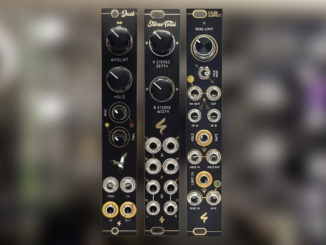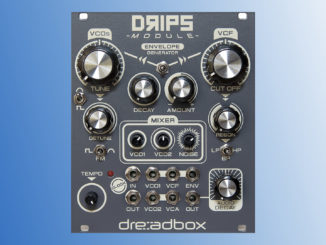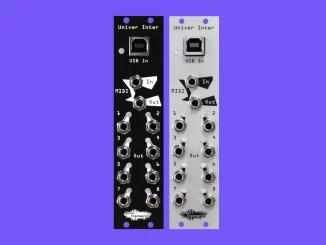IOLabs Particles is a new creative, super flexible physics simulator module for Eurorack; it’s now on Kickstarter.
Notes, rhythm, and movement are elements found in all music styles. In modular synthesizers, these are generated with CV, gate, and trigger signals from keyboards, sequencers, LFOs, and envelopes… You can also experimentally, such as with random generators or physics simulators.
The latter is an idea that is increasingly found in hardware. The most famous here is the Teenage Engineering OP-1, which is the Tombola device. A unique, fun sequencer based on the principles of physics. The Korg modwave also uses physics in its touchpad.
With Particles, the concept of physics is now also coming to Eurorack, but in an extreme form. It’s like the OP-1 Tombola sequencer but on steroids. IOLabs, the developers of the wild FLUX sequencer have brought the concept to Eurorack.
IOLabs Particles
Recently launched on Kickstarter, IOLabs Particles is a new touchscreen-based creative physics simulator in Eurorack. The module consists of four knobs, a touch screen, and a huge number of I/O. I hope it keeps the gold look; it looks like it is from another star.
The engine is based on the concept of physics implemented with particles. In total, you can add up to 50 particles in each patch. Each particle in the simulator can be fully customized with its own acceleration amount, velocity, gravity, mass, and starting XY.
Particles can travel through portals, be removed from the simulation by black holes, and collide with the environment and each other to generate gates. With the touchscreen, you can draw your own simulation from scratch. Alternatively, you can use it to input positional values in the UI manually.
Then, these created surfaces can be animated to create structures that move the particles around the display in a controlled manner, on user-drawn paths, and more. I have OP-1 tombola vibes, but in the extreme.
Full CV Control
And, of course, all this is fully CV controllable and mappable to outputs. For example, each particle can control up to 12 outputs. That’s a lot of signals. Plus, MIDI support will be added in the future.
With the flexibility of the structures and particle system, you can achieve near-endless forms of complex signals, from note and drum sequences to sophisticated CV modulations, and more. Map the particle’s XY position to the CV outputs, and you can achieve various evolving results.
Internal timed resets or external reset inputs can be used to sync the module or to create repetition and rhythm. Alternatively, no resets can be used for free flowing, ongoing compositions, generating musical events based on collisions and current particle locations.
Creations can be saved in “modular” presets to a microSD card that includes various groups of a patch (particle, sim element…)
Particles Module
A super exciting module that IOLabs has developed here. I love unusual generators like these that allow you to explore new ways of music production and sound design. It’s great to see this coming to Eurorack.
If you like physics concepts, I can highly recommend “Divisions”, a bouncing ball Max for Live device by Dillon Bastan. It takes similar paths.
You can support the development of the IOLabs Particles on the Kickstarter page. With a pledge of £419/492€, you reserve a Particles module with shipping in July 2024.
As a reminder: Kickstarter is not a purchase contract but you support the developer and the project with your fund. If you succeed, you will get the module.
More information here: IOLabs / Kickstarter






Be the first to comment